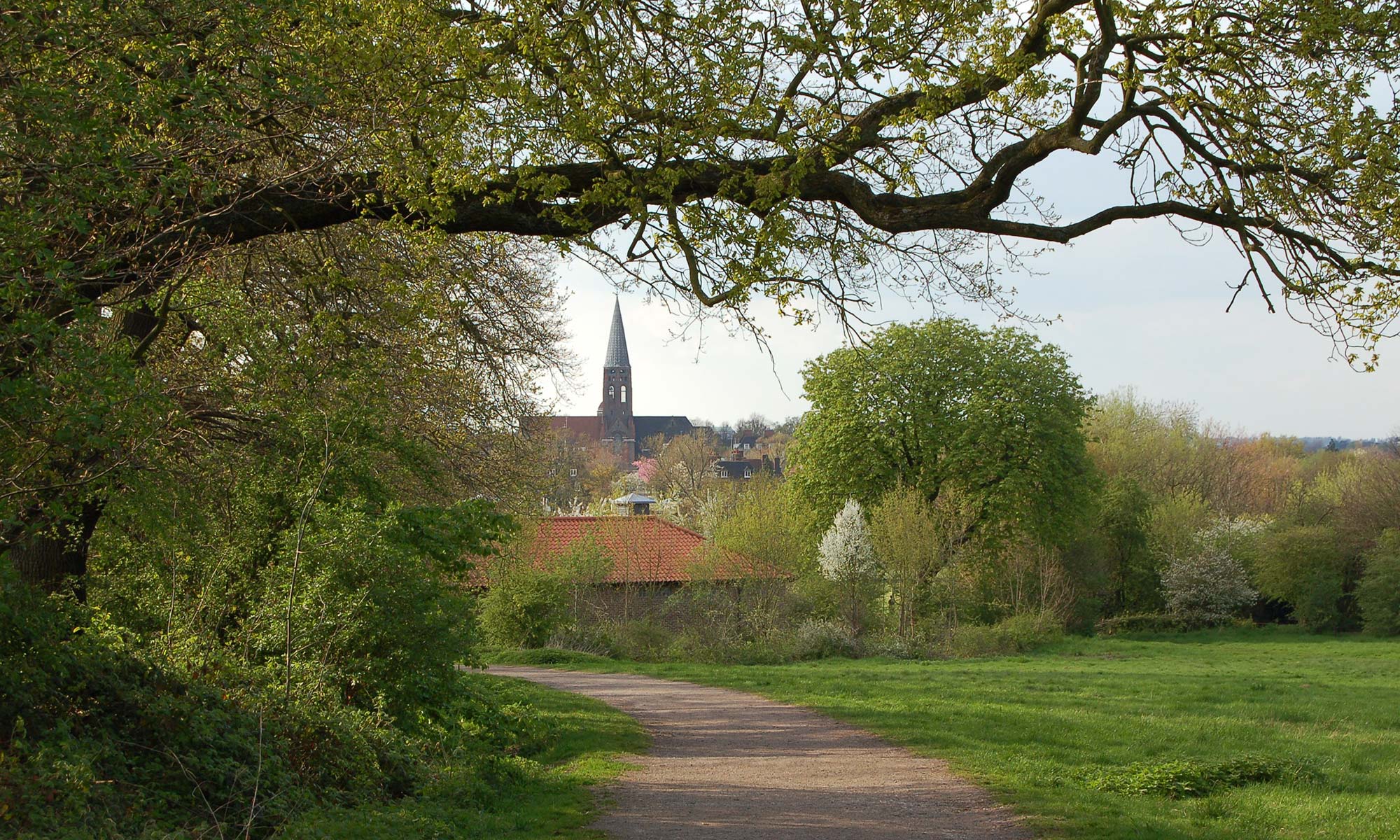We have 2 very popular Shakespeare Study groups which are ably led by Richard Abramson, who has an MA in Shakespeare Studies. You can listen to one of Richard’s lectures on the Merchant of Venice. Just follow the link below:
Meet the Current Affairs 2 Group
Marion Godfrey sent this report about her very popular weekly discussion group:
May I introduce the Current Affairs 2 group to you?
We are a happy band of voluble, yet polite, diverse group of members interested in current events, politics, and moral conundrums (or is it conundra?). Meetings used to be held fortnightly in my home, alternating with my colleague running Current Affairs 1, Malcolm Brahams. During the pandemic, we have been using the HGS U3A Zoom facility to hold weekly meetings.
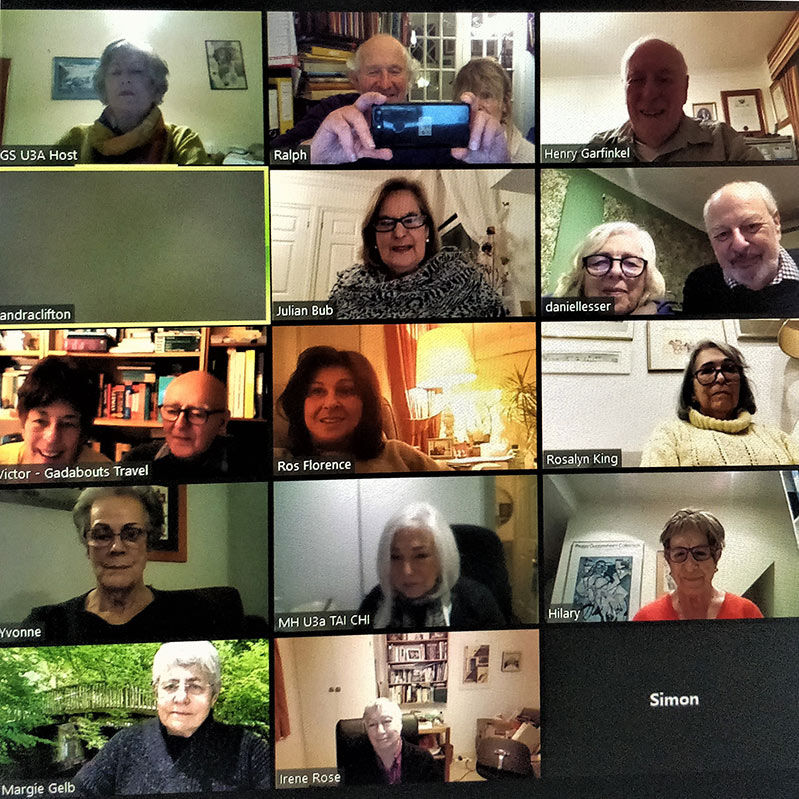
In my home, I was restricted to around 12 members, who debated over drinks (nonalcoholic!), patisserie and fruit… Luckily, however diverse the opinions, there was never blood on the carpet. Now, I have anything up to 22 members joining me for lively discussions of current issues.
We usually end on a light-hearted note, for example, recently I held a news quiz — I suspect some of my group of cheating — and we have had jokes, anecdotes and there has been a great deal of laughter in these troubled times.
Lockdown London would have been so much more difficult without the technology at our disposal. I am so fortunate to have the best group of people and they all tell me how much they enjoy our sessions.
Evening Book Group
One of the members of the group, Anne Gold, shares her views about this group:
I have really enjoyed the 2020 Evening Book Group. We managed to meet up in each other’s houses for the first three months of the year. After that we met virtually via Zoom with our very competent leader Tina Stanton organising us. Each month one person choses a book and brings it back to the group and then we discuss our likes and dislikes. It is interesting how people’s opinions vary.
Tina asked us to vote for which book we thought was the best of the year. The first book of the year by Delia Owens Where the Crawdads Sing won the vote. At our last meeting before covid-19 restrictions we discussed Educated by Tara Westover and managed to see a video performance by the author being interviewed; this was really interesting.
We are ten in the group and generally manage to have nine of us attending. This number seems to be right, everyone gets a chance to express the way they feel about what they read. For me I love to know that there will be a book chosen for me each month to read. Some I just cannot put down, and have to make notes to bring to the group. I also try and read other books which I hope will at a later date be my choice for the group.
It was very interesting that our December book, The Giver of Stars by Jojo Moyes, caused a lot of controversy as she may have taken her ideas from another writer on the same subject.
I look forward to the books in 2021 and hope it will not be too long before we can meet in each other’s homes.
Author Deborah Moggach talks to HGS U3A
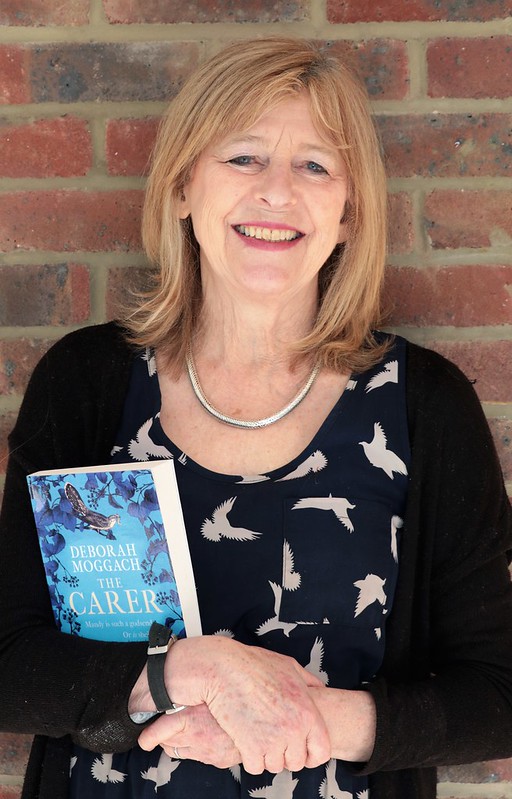
Despite her very busy schedule, promoting her latest novel, The Carer, Deborah Moggach was available to give a talk to our U3A Topical Talk in February. Speaking with great enthusiasm to a packed hall of members, Deborah reflected firstly about her career and her life experiences. As the author of over 20 novels and best known for her publications, The Best Exotic Marigold Hotel and Tulip Fever,which were subsequently made into films; there were many stories and incidents to relate, some of which were highly amusing.
She also explained about her experiences with older people, indeed her own parents which led her to write her most recent novel The Carer. Deborah’s books were on sale after the event and sold out. Indeed, one of my friends bought me as a gift The Carer, which is a splendid read with interesting twists in the plot and some very humorous moments; so thoroughly recommended.
Report by Daphne Berkovi; photo by Myke Jacobs
Sorolla: Painter of Light
Our U3A were given a very special treat on 26 September by our Topical Talk invited guest Dr Jacqueline Cockburn, as Dr Cockburn is an international freelance lecturer, who kindly slotted her talk for us into her busy schedule.
The talk was superb and so informative, giving us such insight into the work of Joaquin Sorolla Painter of Light, who was the great Spanish Impressionist painter. Dr Cockburn related that Sorolla had a great social conscience and this was portrayed in many of his paintings, including several that we were shown for example of a young woman on a train, Marguerite, where Sorolla replays a scene he witnessed on a train of a shackled woman being escorted to her trial by two armed guards. Her crime? Allegedly the murder of her child probably being transported to prison, who had a child out of wedlock. Another painting was Sad Inheritance, disabled children bathing at the sea in Valencia.
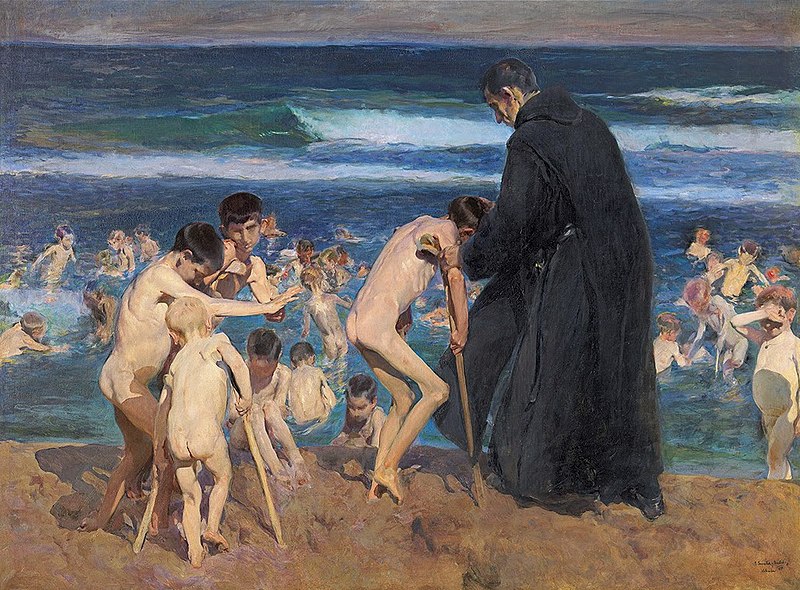
Sewing the Sail, where Sorolla captures half a dozen men and women working on a giant sailcloth beneath the branches on a sunny day in a Spanish garden. Mother, which is a dreamy scene of billowy cloud-like creams of his wife Clothilde and their new-born child seemingly floating in a swirl of white eiderdowns and pillows.
Our members were so enthusiastic about attending the talk that several have signed up for her acclaimed Art and Culture tours in Andalucia, Residential Courses in Gaucin.
Dr Cockburn’s new book A Taste of Art, London is being published on 15 October. We are also delighted that she will be returning to our U3A to give the second part of her talk on 30 January 2020.
Report by Daphne Berkovi
Magic Lanterns to MGM
Our U3A were very fortunate this month to host an exciting and original talk led by Dr Geri Parlby. Dr Parlby is expert in her field of art history, gaining a Masters in History of Art, and a theology doctorate. She is also the principal lecturer on the Arts Society South West Area’s History of Art course and is an Honorary Research Fellow at Roehampton University. Dr Parlby took us on an animated and extremely captivating whistle stop historical tour of the motion picture industry.

Speaking to a full hall of members, she explained that magic lantern slides brought the world to life in pictures. The first lantern slides were created in the 1600s, 200 years before photography was invented. This provided entertainment and education in the way that cinema does today. The original slides were made by painting images onto small pieces of glass; and people viewed the slides by shining candlelight or gaslight through them. Moving images had been a powerful source for imagination from the first moment a magic lantern flickered into life in the 17th century. In her lecture, Dr Parlby demonstrated through magnificent slides how the motion picture industry first developed throughout the late 19th and early 20th century. How it then went on to change the face of entertainment and inspire some of the greatest artists of the early 20th century.
After the talk we asked our members if they would like Dr Parlby to return next year for another talk, which was met with a resounding applause and a definite “Yes”.
Report by Daphne Berkovi; photo by Malcolm Brahams
Author Meets Evening Book Group
HGS U3A Evening Book Group entertained and were entertained by the author of the group’s most recent read.
Rick Friend, author of The Pope’s Son, joined the Evening Book Group to inform our discussion about his novel. Rick, the brother of one of the members of the group, made his debut as an author with this book—based 90% on fact—about the “virtual kidnapping” of a little Jewish boy, Edgardo Mortara, on the orders of Pope Pius IV in 1858. Rick Friend came across this extraordinary story in the archives of Swiss Cottage Library where he read a piece about it in the Jewish Chronicle. He was intrigued and continued to research the case—leading eventually to writing this gripping novel.
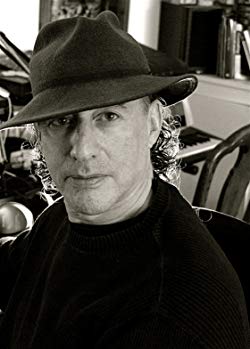
Rick told the group “It seemed like a hidden story, as none of my Jewish or Catholic friends had ever heard about it.” Rick told us that he had spent months researching in the British Library and the Vatican to find out more about the case and about Pope Pius IV. The case was well documented in the Catholic press of the time, and also The Times of London. It took many years of painstaking research and visits to Liège, Bologna, and Rome to complete the work.
It was a cause celèbre of the time that the Pope had arranged that Edgardo Mortara was taken from his parents’ home, orthodox Jews, and brought to the Papal court “in order to guide the boy’s soul to heaven”. Edgardo had been secretly baptised by his 14 year nursemaid when as a baby he was very ill. This baptism formed the basis for the “abduction” by the Papal emissaries.
The group learnt from Rick that, at the time, almost every country in the world was aware of this great injustice—particularly of course the parents of Edgardo who never recovered the trauma of losing their son in this way. Many countries and their representatives had urged the Pope to let the boy go, including Sir Moses Montefiore, the British aristocrat—all to no avail.
This “first” for the Evening Book Group of being able to talk to the author about their work, is something we hope to repeat—as our understanding and enjoyment of The Pope’s Son was greatly enhanced by having Rick Friend join us.
Report by Tanya Ossack and Tina Stanton of the HGS U3A Evening Book Group
Silver Vaults and Drapers Hall
In February and March, the Days Out group have had two very interesting outings. The visit to the London Silver Vaults on 2 February was amazing. After we all had to go through a security check at the reception desk, we made our way to the selection of 30 shop units, all filled to the ceilings with such an enormous array of items that was really mind boggling. All the owners were enthusiastic and willing to talk about the collections of items in their shops and gave us information about some of the most unusual intricate and elaborate presentation items on display explaining the history of who owned them and the occasions of when they were presented.
Unfortunately, the afternoon turned out to be quite a challenge as the walk to and from the restaurant and a delay when leaving made us late. This meant the visit to Dr Johnson’s House in the afternoon involved far more walking than was envisaged, and regrettably we were late meeting up with the members who we had arranged to meet at the House.
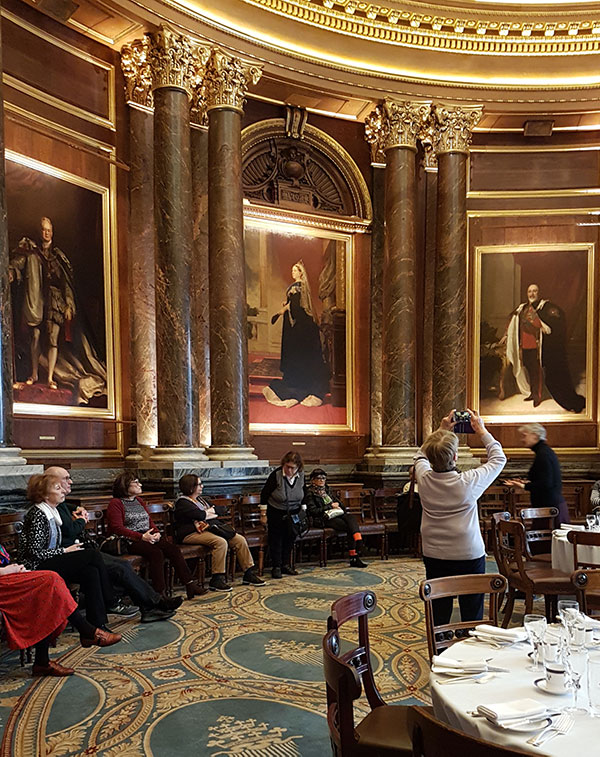
Our visit and journey to Drapers Hall on 3 March went much more smoothly and when we arrived we were welcomed with beautifully served tea and biscuits in the huge reception hall. The curator gave a talk about the history of the Livery Houses and the charities they support and took us on a guided tour of the magnificently decorated rooms. As you can see by the photos that on the day we visited two rooms were laid out ready for a Charity Dinner and a Card Tournament that evening.

If you would like to join us on our next visit on the Wednesday 1 May to Down House, the former home of Charles Darwin, please visit the Outdoor Activities page for more information and a booking form.
Report and photos by Barbara Bliss
Visit to Lloyd’s of London
On 21 January 2019, Daphne Berkovi took a group of HGS U3A members to Lloyd’s of London for a tour. Lloyd’s has always had significant involvement in Europe and the USA but now seeks to increase its networks in China, India and other non-traditional markets. In light of Brexit, Lloyd’s has established an office in Brussels to ensure continuity of business arrangements.
Lloyd’s is now 330 years old. The idea of insurance is believed to have started some 100 years beforehand in the Netherlands. Following the Great Fire of London in 1666, concern grew about the risks being faced particularly by ships. So, in 1688 Edward Lloyd in his coffee shop started to offer mariners the opportunity to insure each other’s ships. They recognised that mariners could share the element of risk arising and that spreading this risk was mutually beneficial. The action of the mariners writing their names under each other lead to the term “underwriting”. For the first 200 years Lloyd’s was only involved in insuring ships and their cargos, and in ship auctions. A huge international intelligence network underpinned the business and Lloyd’s List (now considered to be the oldest newspaper) was established to report on ships’ progress and problems.
A Lithuanian Jew called John Julius Angerstein saw the opportunity to expand Lloyd’s market into the Royal Exchange in Cornhill. From 1900 they increased their scope to property including in the USA. A big shock came with San Francisco earthquake and fires in 1906; but the fact that Lloyd’s ensured that all valid claims were paid immediately, in cash, improved Lloyd’s reputation worldwide.
The Lloyd’s building at 1 Lime Street stands on the site of a Roman market place. The current building was designed by Richard Rogers and erected between 1978–1986. The “Functional” architectural style is made primarily from concrete and glass with stainless steel cladding, including many round windows to reflect portals in a ship.
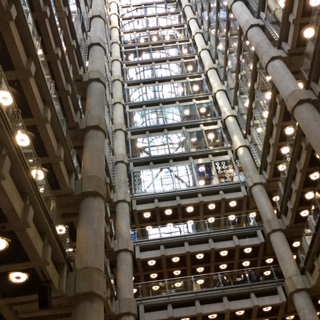
Lord Rodgers wanted the space to work as market place with uninterrupted views across the floors so brokers can quickly scan the available underwriters. Thus, Rodgers designed an “inside out” building exposing the pipes for utilities, air conditioning and heating and the services such as staircases and lifts all on the exterior so these do not impose on the trading area. The sub-terrain floors also house generator engines to provide independent power supplies. In 2011 it became the youngest Grade 1 listed building in country, so nothing can change without special permission; but consent was granted to change the original frosted glass windows to transparent glass to improve the natural light for staff.
Each floor in the building concentrates on different business sectors but the basic approach is the same. The underwriters are technicians sitting at computer screens in their “box” whilst the brokers rush around the “Room” carrying documents with details of their business to get best quote, traditionally based on face-to-face personal connections. The documentation “slips” are then stamped with an emblem, confirming the lead underwriters who agreed the business and other underwriters then take a share. In the past, wealthy individuals provided capital to provide funds to pay claims. These “names” often earnt good returns, but their unlimited liability meant they could also suffer calamitous personal losses. Since 1980 Lloyd’s intervened to phase out individuals and reformed their arrangements to make sure underwriter’ syndicates manage the risk, and oversee they have enough premiums and capital to pay valid claims.
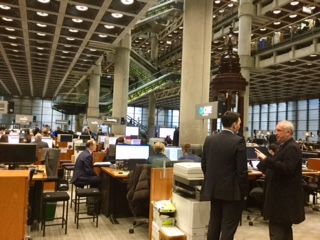
Despite the modernity of the building, history is remembered by the central location of the Loss Book inscribed with major losses and the Lutine Bell that is traditionally rung. The last such occasion was the destruction of the Twin Towers. Also included in the original brief was the wish to incorporate the old library from a previous Lloyd’s building on the site; and this is now the main meeting room, which oozes history both from its historical style and from the paintings of past chairmen hanging around its walls. Whilst the original brief made provisions for these historical factors, plans were fairly advanced before the council chamber was incorporated. The Adams Room was rebuilt brick by brick into the space and, being two storeys high, resulted in truncating the headroom of the floor above.
5000 staff work in the building. Facilities include a wellbeing centre and restaurant. Lloyd’s continues to review and reform its practices in line with current thinking. For example, until the 1970s no women could join the staff and there remains a predominantly white, male, upper-class profile; but there is increased awareness of the need to improve diversification amongst its staff. Similar adaptations have replaced the red-clothed “waiters” that passed messages in the previous 1956 Lloyd’s building. Lloyd’s will no doubt find ways to adapt with modern technology communications systems.
Report and photos by Carmel Eilon
A gem of a talk on cabaret
Our February Topical Talk was an absolute gem as our members were fortunate to hear Ruth Leon talk about the history of cabaret.
 Ruth is a Peabody and Emmy Award-winning television producer and director of music, theatre, and arts programmes; a Visiting Professor of Drama at the University of Kingston Upon Thames, where she teaches courses on Musical Theatre, Criticism, and Cabaret. She has written/ co-written, with her husband, the late Sheridan Morley, eleven books about the theatre and music.
Ruth is a Peabody and Emmy Award-winning television producer and director of music, theatre, and arts programmes; a Visiting Professor of Drama at the University of Kingston Upon Thames, where she teaches courses on Musical Theatre, Criticism, and Cabaret. She has written/ co-written, with her husband, the late Sheridan Morley, eleven books about the theatre and music.
Her talk recounted not only the historical aspects of cabaret and where it emanated from, but we were taken on a ‘whistle stop tour’ of cabaret across the continents — from North America to the highlights of Europe. We were entertained by some wonderful film clips from Maurice Chevalier, Noel Coward, Can Can dancers at the Folies Bergère, and Marlene Dietrich amongst many others. Ruth can frequently be found at the Pheasantry in Chelsea enjoying cabaret and music, or in the stalls of London theatres, frantically scribbling her reviews.
Report by Daphne Berkovi; photo by Myke Jacobs
